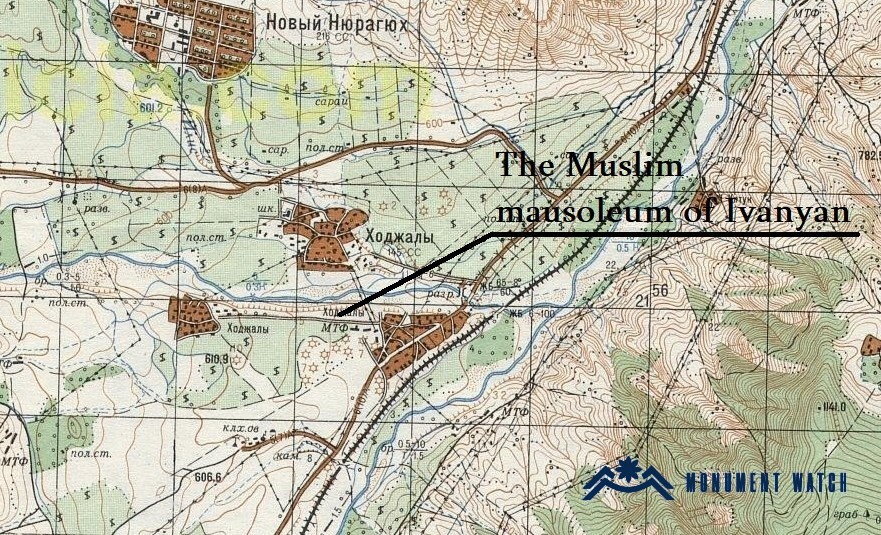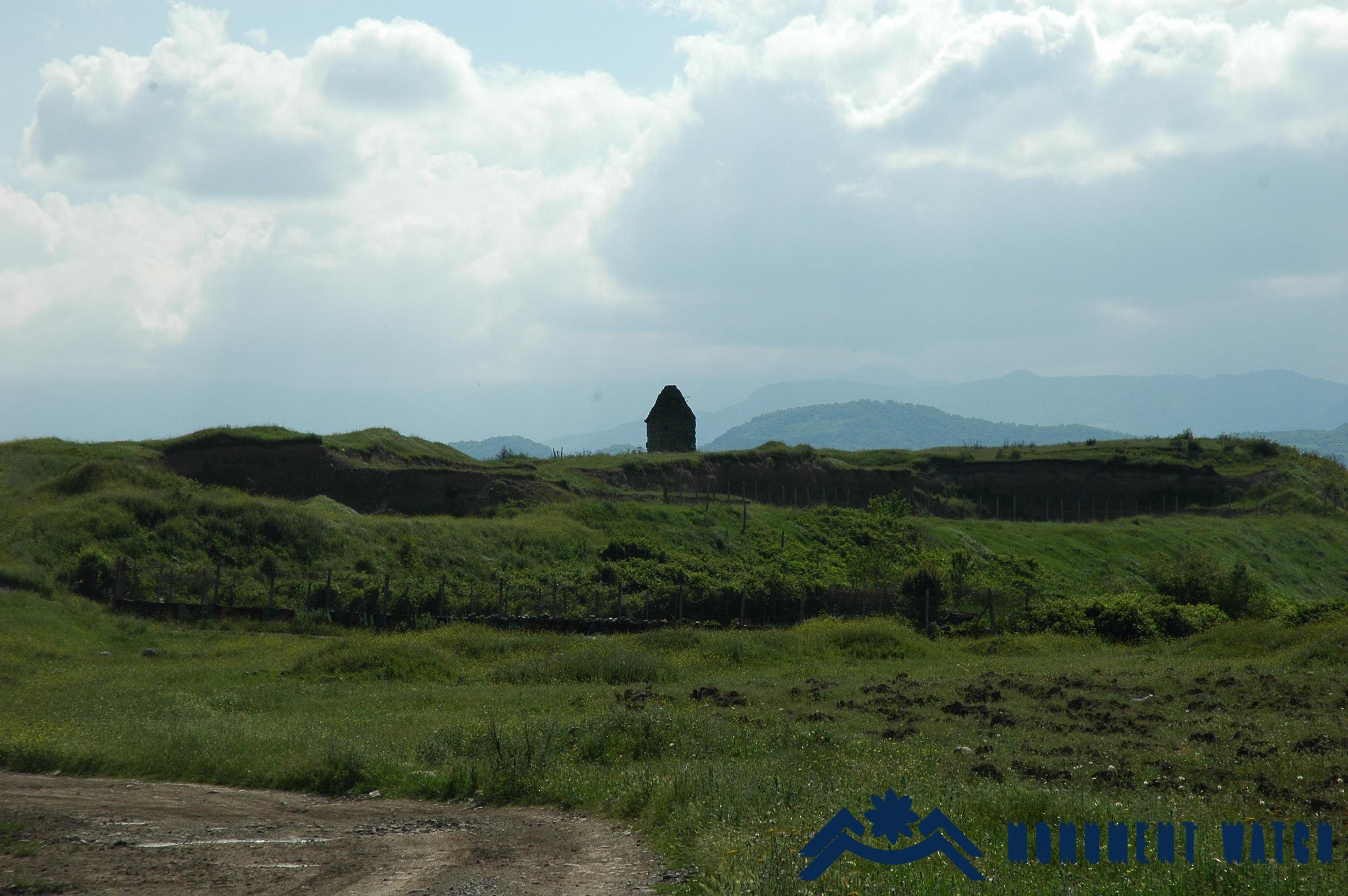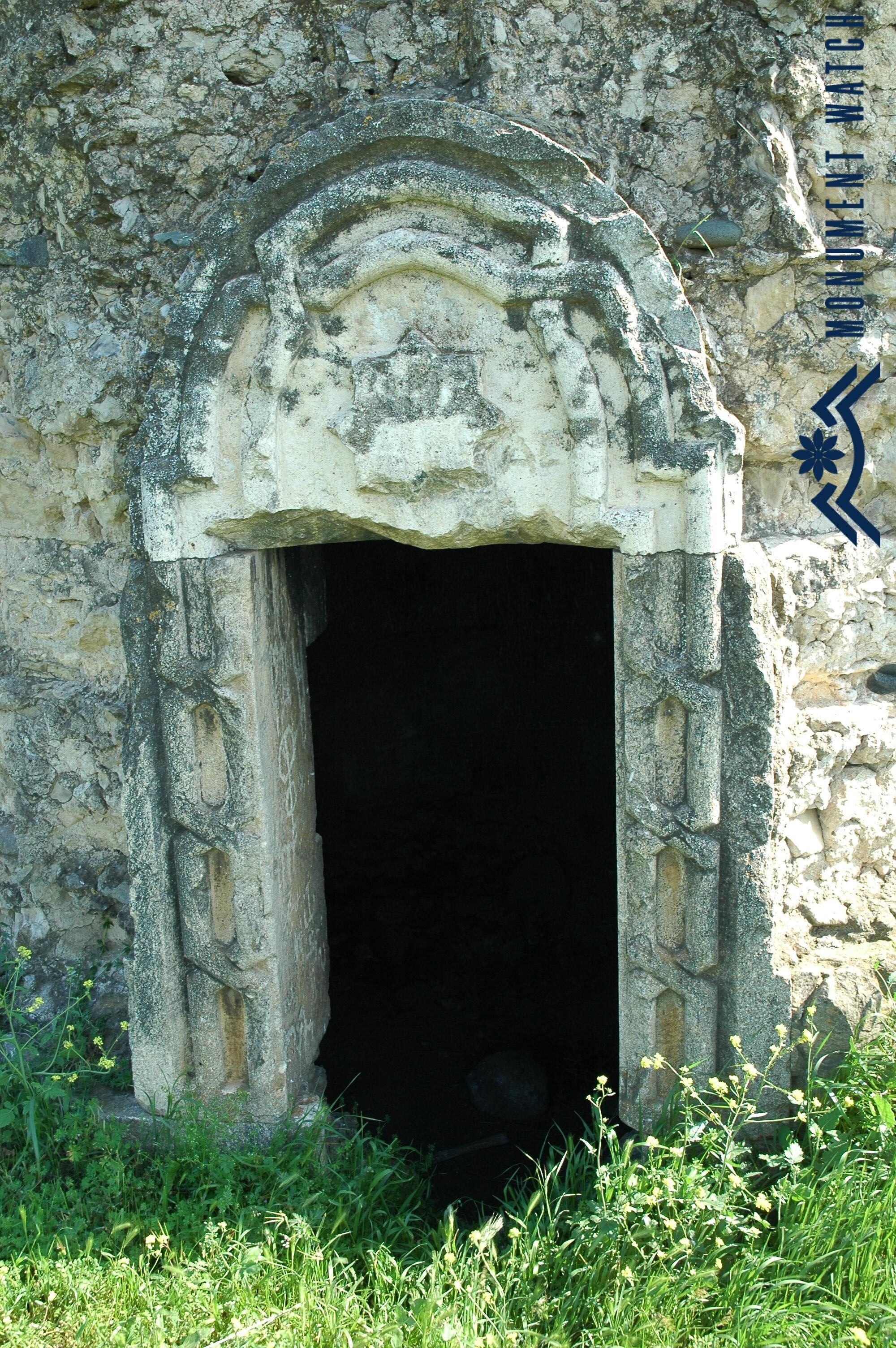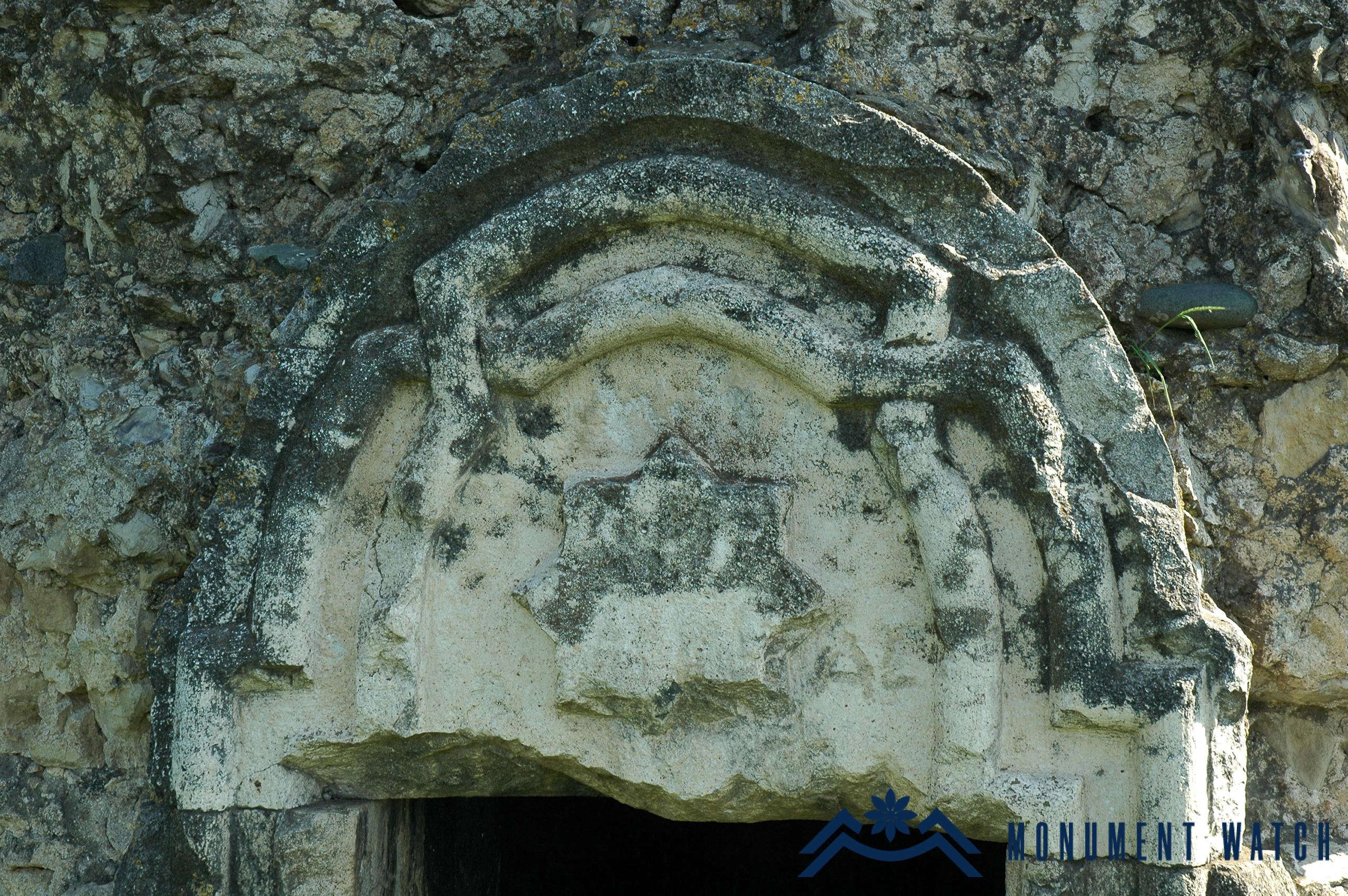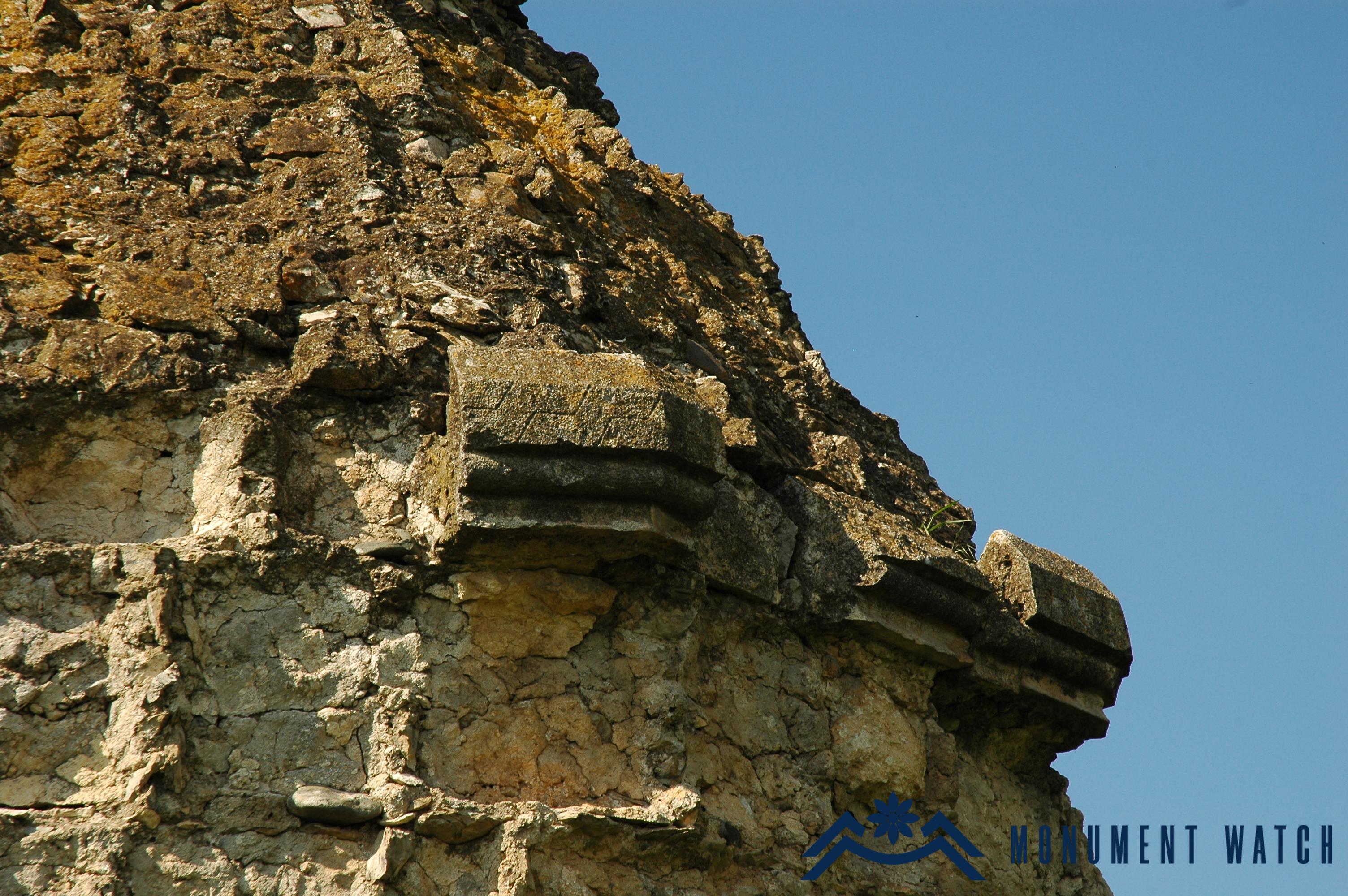The Muslim mausoleum of Ivanyan
Location
The mausoleum is located near the village of Ivanyan in the Askeran region of the Republic of Artsakh (Fig. 1). It is situated on a slightly elevated area relative to the surrounding terrain (Karapetyan 2010, 18-19).
Historical overview
There is no historical information available about the mausoleum. Islamic mausoleums in the lowland areas of Artsakh were typically built for members of the new ruling elite. The earliest examples of these structures date back to the late 13th century when Islam became widespread among the Mongol elite. This was mainly due to the reforms implemented by Ghazan Khan (Petrushevsky 1960, 55; Useinov, Bretanitsky, Salamzade 1963, 128). Islamic mausoleums can be found in the lowland and foothill zones of Artsakh. This is because the wide steppe area between the Kura and Araks rivers was a central hub for various Mongolian elite representatives (Manandyan 1952, 242). The mausoleum in Ivanyan is located in the foothill zone, with the expansive Mil-Artsakh steppe lying beyond it.
Architectural-compositional examination
The mausoleum features an octagonal layout with a circular interior (Fig. 2). Its design and exterior elements are typical of Islamic mausoleums from the 14th and 15th centuries (Salamzade 1964, 37).
The mausoleum features a single entrance located on the north side (Fig. 3). It was constructed using lime mortar and faced with local white limestone. However, most of the facing stones have not been preserved. The structure of the entrance remains intact, including the lintel and the entrance curbstones. A geometric, diamond-shaped rosette is carved on the lintel, serving as the structure's only ornamentation (Fig. 4). In some areas, the stones of the cornice have been preserved (Fig. 5). The original covering of the mausoleum has not survived. However, based on the mausoleum 's overall volume, proportions, appearance, and the shape of the cornice stones, it likely featured a pointed finial, similar to most mausoleums from the 14th and 15th centuries. The mausoleum features a single window. The interior is polished, with a mihrab located in front of the entrance (Fig. 6). There are no traces of an underground structure on the floor of the mausoleum. Surrounding the mausoleum is a Muslim cemetery, most of whose burials date from the 19th century (Fig. 7).
The condition before and after the war
The mausoleum was not damaged by the Artsakh wars. However, it requires repairs, particularly to the roof, which has cracks and holes. The mausoleum has been missing its facing stones for an extended period, as evidenced by photographs from the 1920s (https://monumentwatch.org/hy/alerts/%d5%ad%d5%b8%d5%bb%d5%a1%d5%ac%d5%b8%d6%82%d5%ab-%d5%a4%d5%a1%d5%b4%d5%a2%d5%a1%d6%80%d5%a1%d5%b6%d5%a1%d5%a4%d5%a1%d5%b7%d5%bf%d5%ab-%d6%87-%d5%ab%d5%bd%d5%ac%d5%a1%d5%b4%d5%a1%d5%af%d5%a1%d5%b6/, https://irs-az.com/new/files/2017/193/2491.pdf).
Bibliography
- Karapetyan 2010 - Karapetyan S., The Muslim monuments of Armenian architecture of Artsakh, Yerevan.
- Manandyan 1952 - Manandyan H., Examining the theory of the history of the Armenian people, Volume III, Yerevan.
- Salamzade 1964 - Salamzade A., Architecture of Azerbaijan XVI-XIX centuries, Baku.
- Petrushevsky 1960 - Petrushevsky I., Agriculture, and agrarian relations in Iran in the 13th-14th centuries, Moscow.
- Useynov, Bretanitsky, Salamzade 1963 - Useynov M., Bretanitsky L., Salamzade A., The History of the architecture of Azerbaijan, Moscow.
- Mkrtchyan 1985 - Mkrtchyan Sh., Historical and architectural monuments of Nagorno Karabakh, Yerevan.
The Muslim mausoleum of Ivanyan
Artsakh
